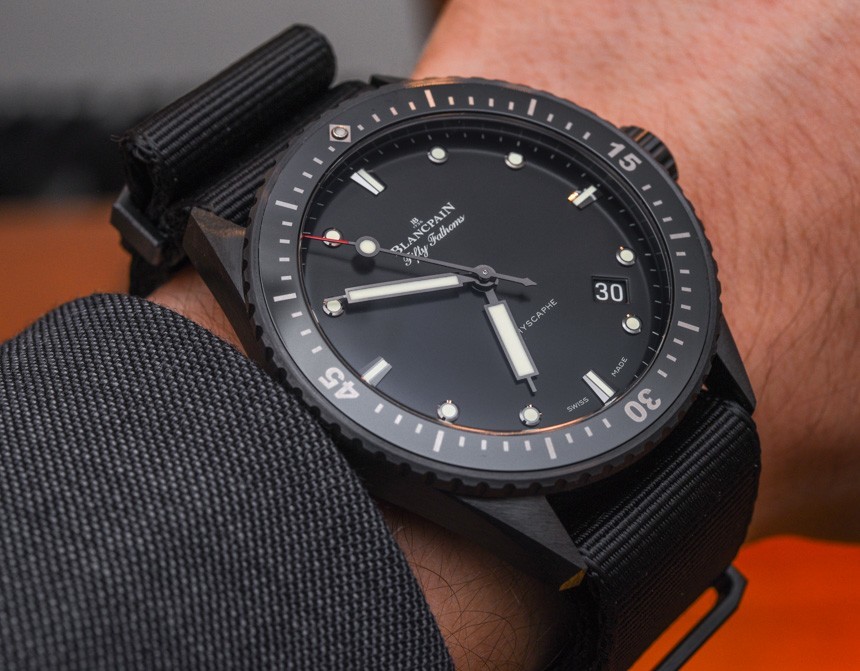
Having a well-established brand in the world of watchmaking is often enough to shift new products. When that brand is primarily associated with an iconic model referenced by said new products, you can all but bank on a favourable reception. 2015 sees the release of the Blancpain new watches Replica Bathyscaphe in ceramic. This material update brings the Blancpain Bathyscaphe, originally designed to be the Fifty Fathoms’ kid brother, screaming into the modern market. Given that Blancpain is owned by the Swatch Group – a conglomerate with considerable experience in the field of ceramics exemplified by the new Omega Speedmasters and the ever-present ceramic stalwart Rado – we should expect good things. So does the Blancpain Bathyscaphe live up to the hype? Have Blancpain managed to evolve the much loved DNA of the Fifty Fathoms into something that balances the old and the new, or have they messed-up a classic formula?
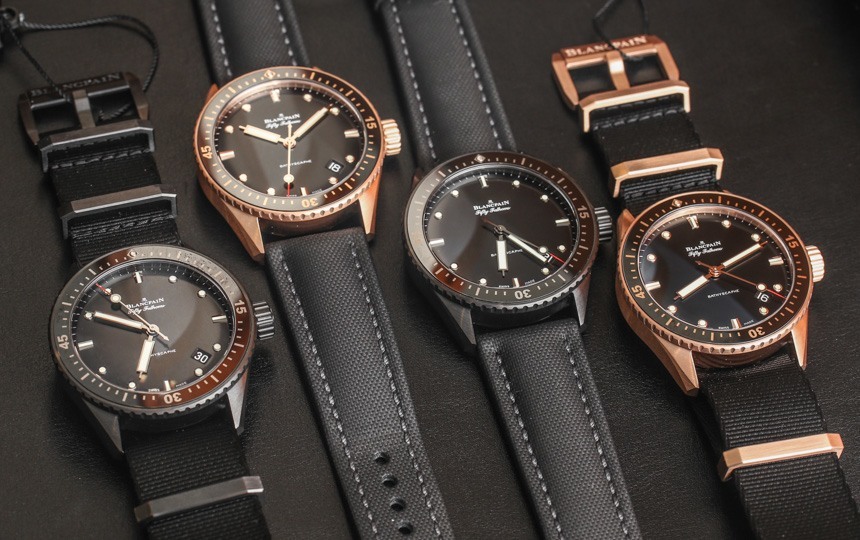
The Blancpain watch models Replica Bathyscaphe is inextricably linked to the Blancpain Fifty Fathoms, which was a trailblazer in its day. ISO 6425, the modern standard for dive watches since 1996, was visibly informed by the marriage of features and novelties first seen in the Blancpain Fifty Fathoms. Before its release, no one had ever seen a unidirectional bezel. Along with that (essential) feature, the Blancpain Fifty Fathoms featured water resistance to (surprise, surprise) 50 fathoms (about 90 meters), automatic winding, double O-ring gaskets on the crown, and luminous markers and hands, most notably the seconds hand, which acts as a running indicator. It was not born as a luxury item, but as a genuine tool. The result of a 1953 collaboration between Blancpain CEO Jean-Jaques Fiechter (who ran the company between 1950 and 1980), and French combat divers Captain Robert “Bob” Maloubier and Lieutenant Claude Riffaud, the 42mm master-stroke went on to sire an entirely new design principle that is now as comfortable in the boardroom as it is on the sea bed. If you’d like to learn more about the history of dive watches, check out this article.
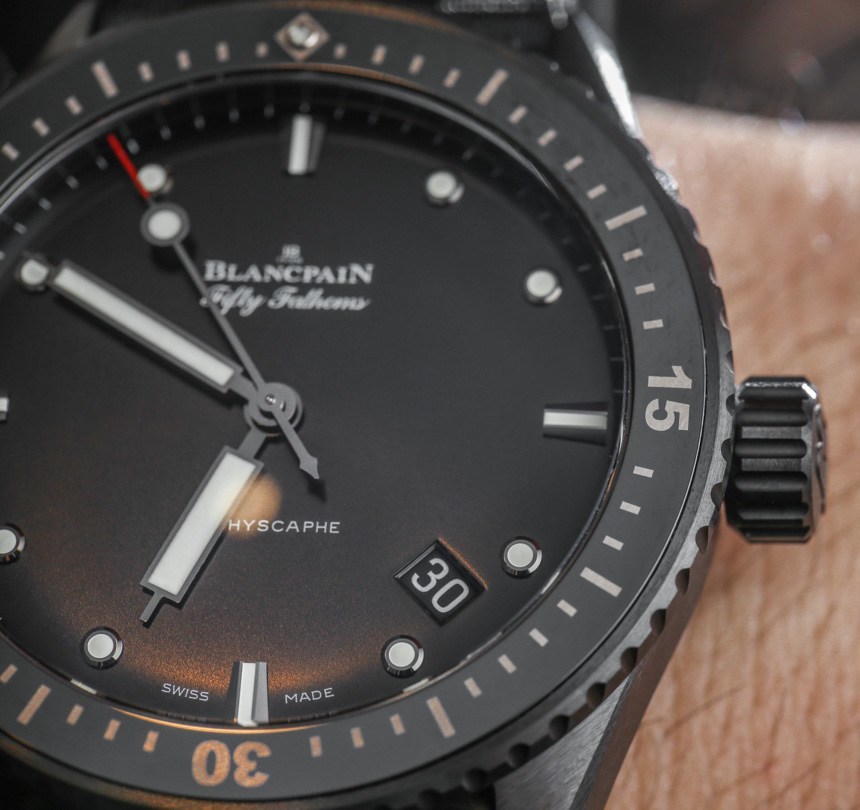
One of its closest descendants in terms of genetics if not appearance is the Blancpain Bathyscaphe. First released in the late Fifties and re-imagined for Baselworld 2013, the Bathyscaphe aimed to capitalise on fans of the Fifty Fathoms and to attract new purchasers. The Blancpain Bathyscaphe does not look like a scaled down version of its forerunner, and were it not for some subtle design nods and a pointed marketing campaign referencing this new incarnation’s heritage, it would not appear related. It does, however, tick all of the boxes as a dive watch and is a serious, if less blunt instrument.
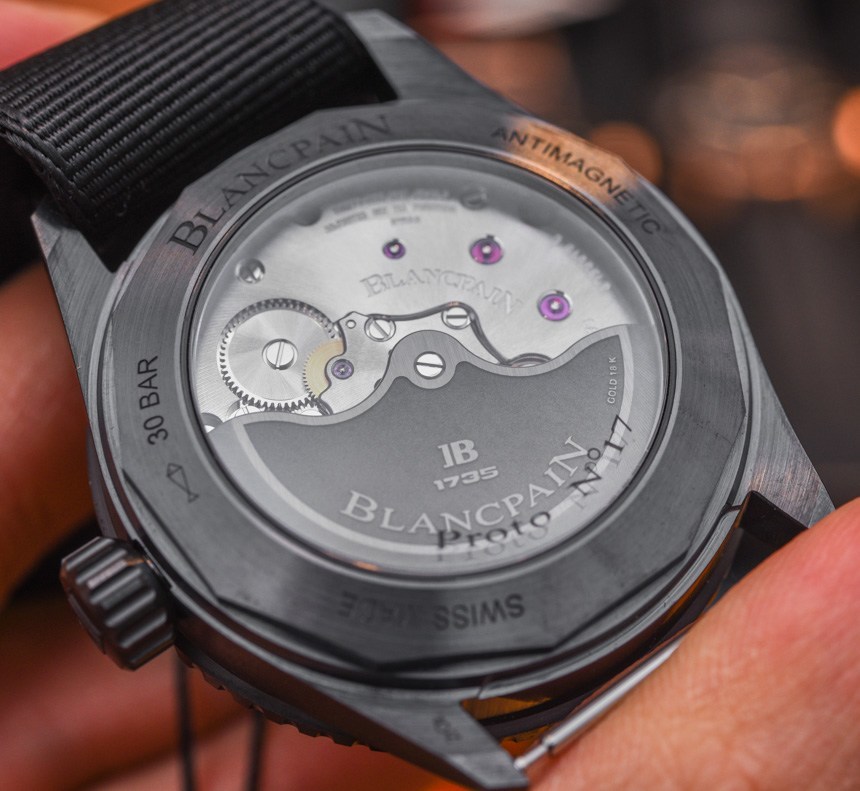
The Blancpain Bathyscaphe could be used as an underwater timer, but it isn’t really meant to be. For starters, it has a glass back, which although not preventing it from reaching a very impressive 300 meters of water resistance, is not a common feature on serious dive tools, as any exposed gasket provides more of a risk of water ingress than a closed case back. The watch is anti-magnetic but is clearly devoid of a Faraday protection plate. It manages this aesthetically pleasing omission by utilising a silicon balance spring. Not only is silicon appealing for its anti-magnetic properties, but its molecular stability is exceptional. It is highly resistant to deformation when exposed to extreme temperatures. The only downside to silicon in this role is its brittleness. Where a classic Nivrox balance spring will bend, one made of silicon could break. It is uncommon for this to happen, though, and would require quite a serious shock to the case. In regards to the ceramic version, it is probably more likely that a shock significant enough to break the balance spring, would chip the case first.
Shakudo itself is not a technique, but more a substance. It’s a metal alloy that’s mostly copper with roughly 4-10% gold. What’s special about the alloy is that it can be treated to achieve a black patina which in many ways looks like lacquer. Why is this significant? It’s all about being able to engrave something with a rich level of detail as well as a good deal of visual comparison. Black against the copper color provides that amount of comparison but without the special black patina properties of shakudo that black may only be achieved by adding black colour. The accession of such pigment (using lacquer for example) reduces the capability for an artist to show off fine detail.Thus, shakudo allows for the screen and engraving of extremely fine detail in tiny spaces with an amazing level of contrast. In other words, images engraved in shakudo really pop. These two Blancpain Villeret Shakudo watches provide exceptional demonstrations of this technique, meaning that there is variety within this set.
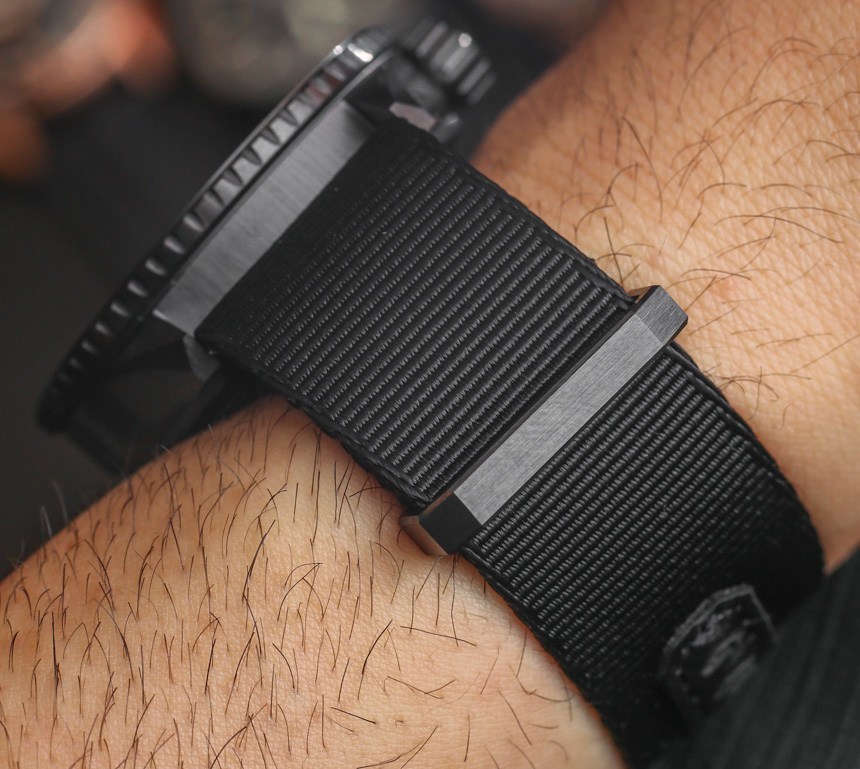
Therein lies the problem with ceramic. It is an attractive material, smooth and organic in appearance, comfortable to wear, and atmospherically resistant in composition, but brittle and irreparable when damaged. There is no sensible way to fix a ceramic case once it’s been damaged due to the manufacturing process (cases start life much larger than they are on the wrist, before being “shrunk” during the finishing process). For this desirable material, every wound is effectively fatal. It’s a great shame that ceramic has this inherent weakness, as it is otherwise ideal for the rigours of diving.
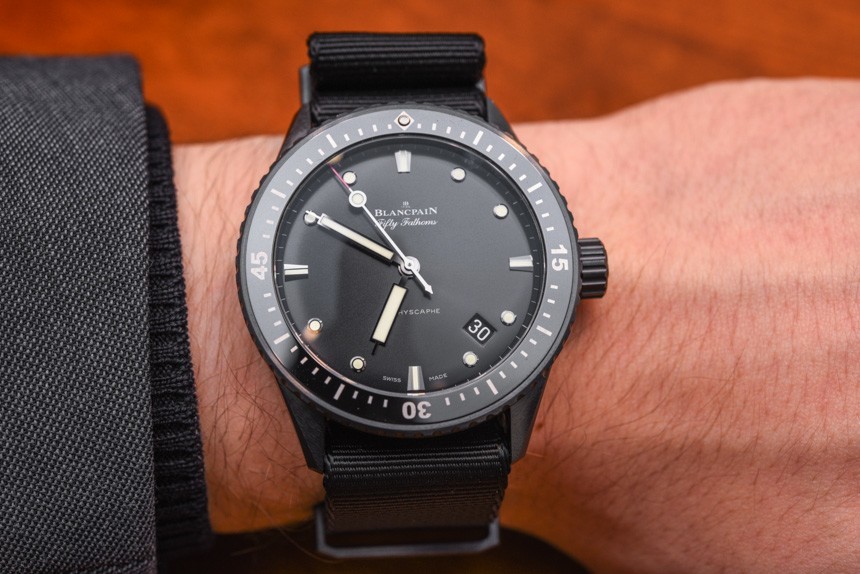
For all those who think ceramic is an awesome new material that offers hitherto unseen aesthetic possibilities in watchmaking, there are just as many (perhaps more) that dislike it for its somewhat “cheap” appearance, its brazen modernity, its susceptibility to irreversible damage, and, however speculatively, its unknown capacity to hold value over time.
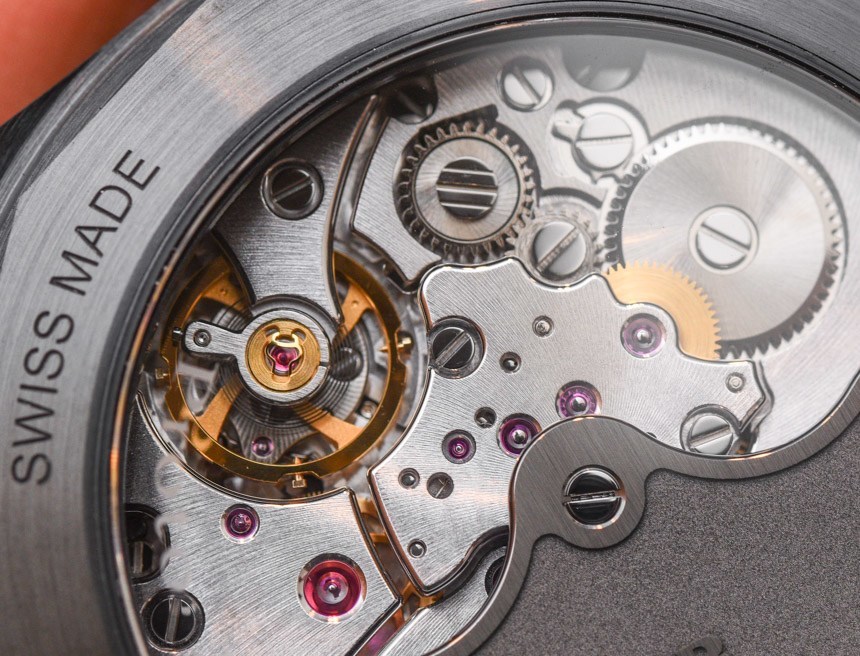
And this is not a small watch. The case measure 43.6mm excluding the crown, and the lugs are spaced a very generous 23mm apart. There are two strap options available with the Blancpain watches prices Replica Fifty Fathoms Bathyscaphe Ceramic: either a sailcloth pin buckle variant, or the choice of a webbing NATO. One common criticism of NATO straps is that they make the watch stand up very proud on the wrist. Fortunately for fans of the wrap-around strap, this watch is only 13.6mm thick, thanks in large part to the slimness of the movement, which measures just 5.65mm. Now, 13.6mm is not amazingly slim, but given the width to height ratio, the watch appears light and elegant. One major difference from the Fifty Fathoms is the low-profile ceramic bezel with liquid metal numbers sported by the Blancpain Bathyscaphe. Despite being a large watch itself, it does look positively contained in comparison to the egregious Fifty Fathoms.
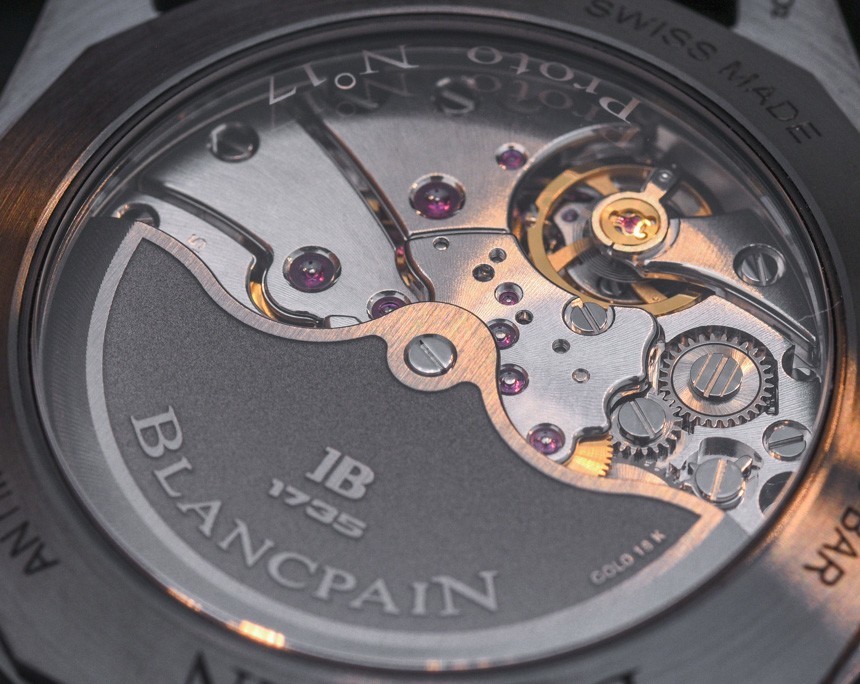
Another way in which the Blancpain Fifty Fathoms Bathyscaphe reveals its self-confident independence from its famous relative, is the design of the hour markers. Relatively small, inlaid dots filled with high-quality luminant mark the hours, with 12, 3, 6, and 9 o’clock flagged by wedge-shaped markers with a thin strip of lume down the middle. The sweeping bevelled lugs are a thing of beauty. The whole profile of this watch is professional and pleasing to the eye, especially the crown, which is a good size and stamped with the Blancpain initial logo.
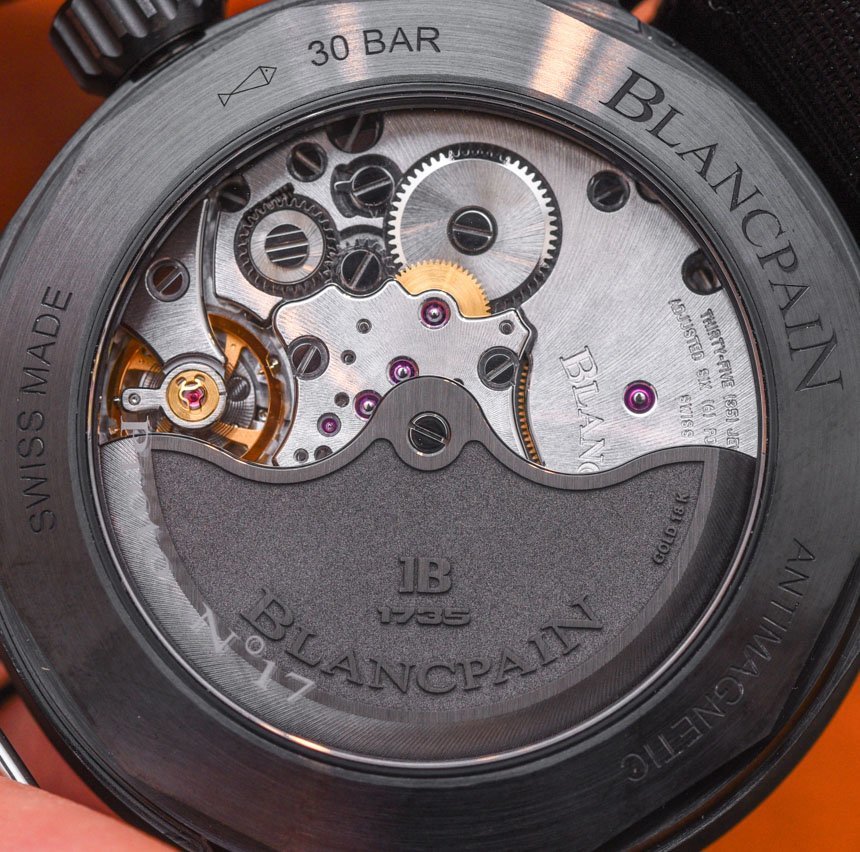
The calibre 1315 is an in-house Blancpain watches cost Replica movement that has featured in the Fifty Fathoms range for some time. With 120 hours power reserve, the 35-jewelled engine keeps this watch ticking in extreme conditions and, thanks to the glass case back, engraved rotor, and traditional frosted finish performs just as ably under the scrutinising eye of would-be admirers. When this watch was first released, it was priced as an entry-level Fifty Fathoms model. With these material advancements, that is no longer really the case. It is still cheaper, but by most standards, it now bears a luxury price tag to compete with its more established peer. The Blancpain Fifty Fathoms Bathyscaphe ceramic model has a price of $12,860, while the rose gold version comes in at $25,200 on the stitched sail cloth, and $26,810 on the NATO. If you’re wondering why the NATO strap is $1,610 more than the standard strap, look no further than the rose gold retainers, that certainly add a bit of sparkle to a strap made of web – an odd combination and a clear indictment of the times: this watch is more likely to see action in the city than the sea, but that doesn’t stop it from doing a job and doing it well. blancpain.com